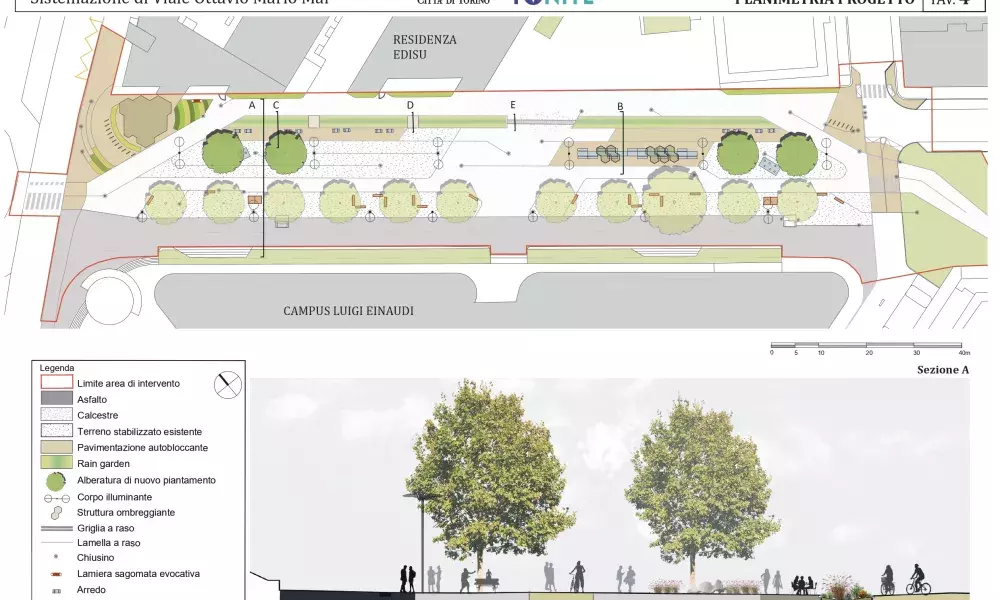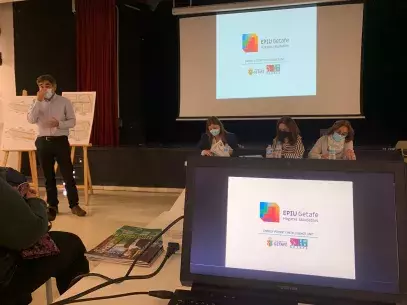
The area near the University Campus on Viale Ottavio Mai is one of the areas deemed to be in need of an urban intervention to increase the perception of security.
Viale Ottavio Mai is a kind of no man’s area; it is a neglected area between the newly constructed university campus on one side and the students’ dormitories on the other side.
In the evening, it feels deserted with few people passing by despite its proximity to the city centre and Vanchiglia, a lively district in the daytime and at night. Vanchiglia has overcrowded public spaces at night and growing conflicts between residents and people enjoying the nightlife. Also to create a new aggregative space, the municipality of Turin has taken a proactive decision to intervene in Viale Ottavio Mai and help shape the design and use of this area. The aim is to make Viale Ottavio Mai more lively both during the day and in the evening while creating a sense of belonging in the university community.
The intervention on Viale Ottavio Mai creates a pedestrian path from corso Verona and via Farini, ideally connecting the lines of trees of these two streets.
A key element of this intervention is to highlight the public accessibility of the area. By building a pedestrian path, people should be enticed to pass through the site; at the same time, lanes for bicycles and emergency vehicles are also to be maintained and expanded.
Then we have also added seats, benches, and a ping-pong table. In addition, one social table (20 metres long) has been built so students can study during the day and local residents can sit, read or simply rest.
Space in the middle of the area will remain empty. Residents and students can use this space to organise small events or simply as a meeting point for walks along the river Dora.
These new features will be complemented by additional public lighting and a rain garden designed to temporarily store rain water to avoid minor flooding.
The delay is due to the Covid-19 pandemic. The municipality launched the tender twice (in April 2021 and then again in May), but the procedures were declared unsuccessful as no bidders submitted any tenders.
The main reason is connected with the rising price of raw materials and, in particular of steel. In fact, such increases are recently common in tender procedures launched by the municipality of Turin and other public administrations.
In this particular tender, we put the prices fixed by the Regional authorities before the pandemic (we couldn't do differently). When costs of raw materials exploded, the bidders likely decided that the tender was not feasible.
We have decided to maintain the same project except for the purchase of one gazebo in galvanized steel due to this shortage of steel. We will purchase the gazebo in the near future.
Then, according to the possibilities given by the law, we launched a tender with a negotiated procedure. Finally, we identified a winning bidder and signed the contract in December 2021.
The work will start in January 2022 and will end in June. So, in the end, the delay will be a six months delay. Taking into account the situation, it could be worst.
To finally see it by June 2022!
Leaving aside the jokes, we expect that Viale Ottavio Mai became a lively place during the day and a bridge between two city areas.
We aim to have a new bridge (a metaphorical one) on the River Dora that makes people living on both sides willing to pass through this new public area. We imagine a place to pass through and a space to stay for the people living in the area and the students.
When we built the project, we had in mind the idea of a study room in an open space, which is the idea behind the social table. An enjoyable place to study with your friends. If then, the University of Turin opens some rooms inside the campus also in the evening, we think that the vitality given by the university will stop to be limited in the daytime. This will certainly provide an essential contribution to make this project working.
About this resource
The Urban Innovative Actions (UIA) is a European Union initiative that provided funding to urban areas across Europe to test new and unproven solutions to urban challenges. The initiative had a total ERDF budget of €372 million for 2014-2020.
Similar content




